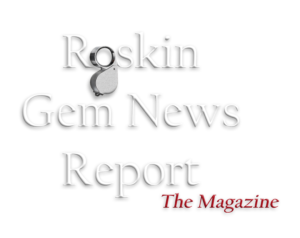Mercury has a Layer of Diamond: NASA Spacecraft Finds Diamond 10 Miles Thick!
Science Hub –
NASA –
NASA’s MESSENGER mission has revealed that Mercury, the solar system’s tiniest planet and the closest to the sun, hides a big secret.
The solar system’s tiniest planet may be hiding a big secret. Using data from NASA’s MESSENGER spacecraft, scientists have determined that a 10-mile-thick diamond mantle may lie beneath the crust of Mercury, the closest planet to the sun.
Mercury has long puzzled scientists as it possesses many qualities that aren’t common to other solar system planets. These include its very dark surface, remarkably dense core, and the premature end of Mercury’s volcanic era.
Graphite
Also among these puzzles are patches of graphite, a type (or “allotrope”) of carbon on the surface of the innermost planet of the solar system. These patches have led scientists to suggest that in Mercury’s early history, the tiny planet had a carbon-rich magma ocean. This ocean would have floated to the surface, creating graphite patches and the dark-shaded hue of Mercury’s surface.
Diamond
The same process would have also led to the formation of a carbon-rich mantle beneath the surface. The team behind these findings thinks that this mantle isn’t graphene, as previously suspected, but is composed of another much more precious allotrope of carbon: diamond.

Under Pressure
“We calculate that, given the new estimate of the pressure at the mantle-core boundary, and knowing that Mercury is a carbon-rich planet, the carbon-bearing mineral that would form at the interface between mantle and core is diamond and not graphite,” team member Olivier Namur, an associate professor at KU Leuven, told Space.com. “Our study uses geophysical data collected by the NASA Messenger spacecraft.”
MESSENGER (Mercury Surface, Space Environment, Geochemistry, and Ranging) launched in Aug. 2004 and became the first spacecraft to orbit Mercury. The mission, which ended in 2015, mapped the entire tiny world, discovering abundant water ice in shadows at the poles and gathering crucial data about Mercury’s geology and magnetic field.
This new study also relates to a major surprise that came a few years ago when scientists re-evaluated the distribution of mass on Mercury, discovering the mantle of this tiny planet is thicker than previously thought.
“We directly thought that this must have a huge implication for the speciation [the distribution of an element or an allotrope amongst chemical species in a system] of carbon, diamond vs graphite, on Mercury,” Namur said.
The team investigated this here on Earth by using a large-volume press to replicate the pressures and temperatures that exist within the interior of Mercury. They applied incredible amounts of pressure, over seven gigapascals, to a synthetic silicate acting as a proxy for the material found in the mantle of Mercury, achieving temperatures of up to 3,950 degrees Fahrenheit (2,177 degrees Celsius).
This allowed them to study how minerals like those that would have been found in Mercury’s mantle in its early existence changed under these conditions. They also used computer modeling to assess data about Mercury’s interior, which gave them clues to how the diamond mantle of Mercury could have been created.
Tap here for more details on Science Hub of this amazing discovery!













